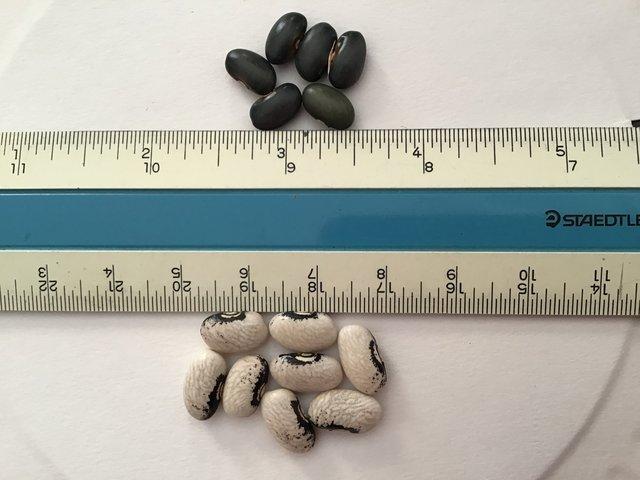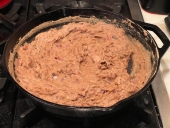


6 Ways To Keep Chickens - pdf download
will be released to subscribers in:
soon!



 5
5




 6
6




 5
5




“The most important decision we make is whether we believe we live in a friendly or hostile universe.”― Albert Einstein
 10
10




A joyful heart is good medicine.
 1
1




 4
4





 11
11




 2
2




 3
3




“The most important decision we make is whether we believe we live in a friendly or hostile universe.”― Albert Einstein
 1
1




Joseph Lofthouse wrote:I highly recommend Lofthouse Dry Bush Bean, which can be purchased from Experimental Farm Network.
An inexpensive way to get a lot of bean seed, is to plant 15 bean soup mix that the grocery stores sell.
A joyful heart is good medicine.

 1
1





 6
6




Nothing ruins a neighborhood like paved roads and water lines.

 2
2




 4
4




 4
4




Denise Spencer wrote:
2. More expense: Buy varieties from specialty bean sellers such as Ranch Gordo https://www.ranchogordo.com/collections/heirloom-beans or
Permaculture...picking the lock back to Eden since 1978.
Pics of my Forest Garden
 4
4




Permaculture...picking the lock back to Eden since 1978.
Pics of my Forest Garden
 3
3




pax amor et lepos in iocando
 1
1




Melissa Ferrin wrote: don't know how to properly season them, heavens knows I sure didn't until I received the secret instructions from my sisters-in-law. But that's a whole other story.

Permaculture...picking the lock back to Eden since 1978.
Pics of my Forest Garden

 3
3




 8
8




Greg Martin wrote:
Melissa Ferrin wrote: don't know how to properly season them, heavens knows I sure didn't until I received the secret instructions from my sisters-in-law. But that's a whole other story.
You tell us Melissa....your secret is safe with us!
pax amor et lepos in iocando




Permaculture...picking the lock back to Eden since 1978.
Pics of my Forest Garden
 6
6




 3
3




$10.00 is a donation. $1,000 is an investment, $1,000,000 is a purchase.
 1
1




Joseph Lofthouse wrote:I highly recommend Lofthouse Dry Bush Bean, which can be purchased from Experimental Farm Network.
An inexpensive way to get a lot of bean seed, is to plant 15 bean soup mix that the grocery stores sell.
Bless your Family,
Mike
 2
2




Tom Worley wrote:I've bought from Native Seed SEARCH (https://www.nativeseeds.org/) in the past, and they were easy to work with. Mostly arid-adapted varieties, and it seems like a good cause.
Bless your Family,
Mike

 5
5




Greg Martin wrote:Just ran across this thread and realized I never came back to update on germination success...yes, the Rancho Gordo runner beans that I bought did indeed have a high germination rate.
Be joyful, though you have considered all the facts. ~Wendell Berry
 10
10




 5
5




Jamie Chevalier wrote:
The semi-runner habit can be handy in the garden, if you are prepared for it. It gives the potential for a higher yield than a straight bush bean, but less labor than setting tall poles and trellis. Tomato cages--which aren't up to the weight of an indeterminate tomato vine--might be a useful self-supporting low trellis. Most pinto strains I know of are semi-runners, and the Beefy Resilient Grex is too.
Nothing ruins a neighborhood like paved roads and water lines.
 1
1




Mark Reed wrote:
Ha, I just last evening, found some of Carol's Beefy Resilient that I had forgotten I had. It's a mix up of all the colors, definitely gonna put them in the ground this year! Especially since you say they too have the semi-runner habit.
A joyful heart is good medicine.
 7
7






 1
1




Jamie Chevalier wrote:
Carol Deppe has done further work to make the Beefy Resilient Beans less viney, more upright, and more compact. She now has lines that are fully bush for less labor, earlier finish and fewer mold problems from contact with wet soil. At the same time she has bred the colors into separate lines, which have different flavor profiles for different purposes. She calls them Beef-Bush Black, Beef-Bush Gold, etc. I'm not aware of anyone who carries the gold, brown, or white lines, but Quail Seeds has the black. It truly does taste like beef, and the cooking water tastes like beef broth.
Proudly presenting RocketMassHeaters.com
A good starting point to all RMH research
How Permies.com works












 4
4




Benjamin Dinkel wrote:I'm very interested to trying the Beefy resilient grex but I'm unable to find them. I'm trying since February. Does anyone know where (or maybe when) to get some?
 7
7




Joseph Lofthouse wrote:I highly recommend Lofthouse Dry Bush Bean, which can be purchased from Experimental Farm Network.
An inexpensive way to get a lot of bean seed, is to plant 15 bean soup mix that the grocery stores sell.
A build too cool to miss:Mike's GreenhouseA great example:Joseph's Garden
All the soil info you'll ever need:
Redhawk's excellent soil-building series





 2
2




Benjamin Dinkel wrote:
Jamie Chevalier wrote:
I'm very interested to trying the Beefy resilient grex but I'm unable to find them. I'm trying since February. Does anyone know where (or maybe when) to get some? Found the Beef-Bush Black on Quail Seeds though and will order them soon.





 1
1




Proudly presenting RocketMassHeaters.com
A good starting point to all RMH research
How Permies.com works
 3
3




Permaculture...picking the lock back to Eden since 1978.
Pics of my Forest Garden




Bless your Family,
Mike





 2
2




Proudly presenting RocketMassHeaters.com
A good starting point to all RMH research
How Permies.com works
 2
2




$10.00 is a donation. $1,000 is an investment, $1,000,000 is a purchase.
 3
3





|
I do some of my very best work in water. Like this tiny ad:
Freaky Cheap Heat - 2 hour movie - HD streaming
https://permies.com/wiki/238453/Freaky-Cheap-Heat-hour-movie
|






